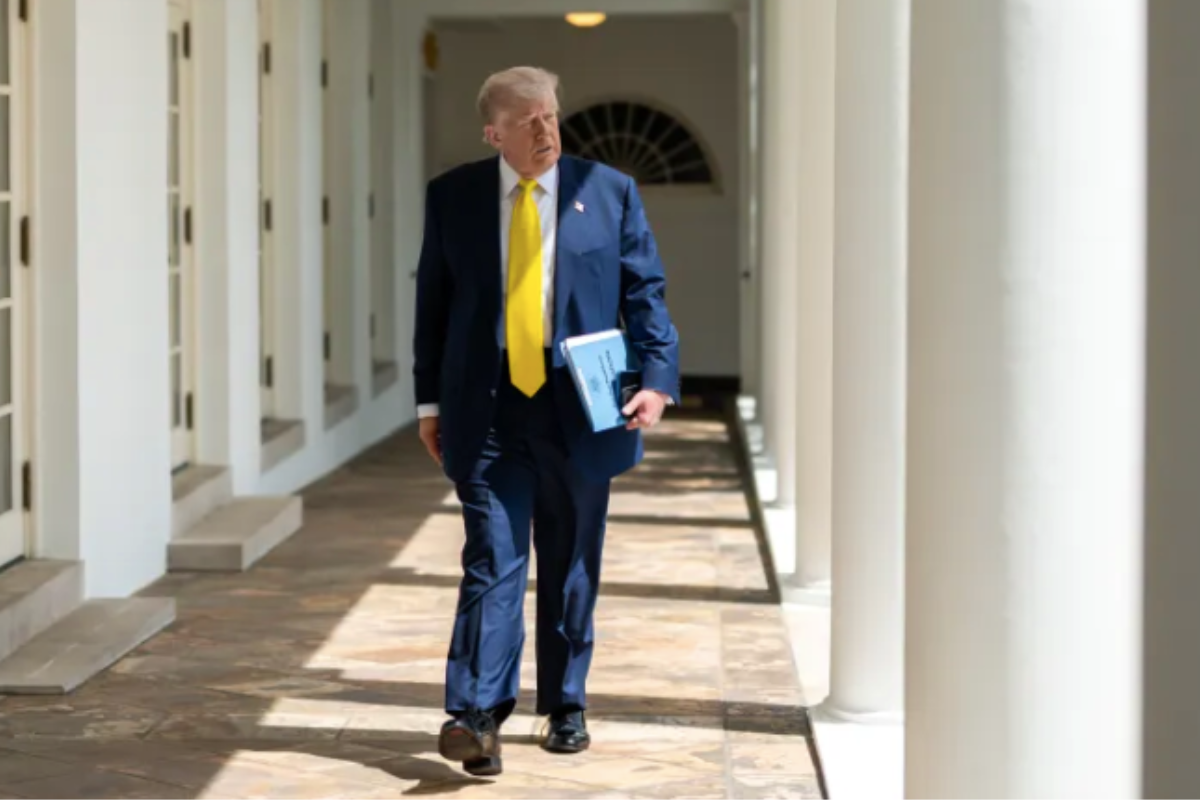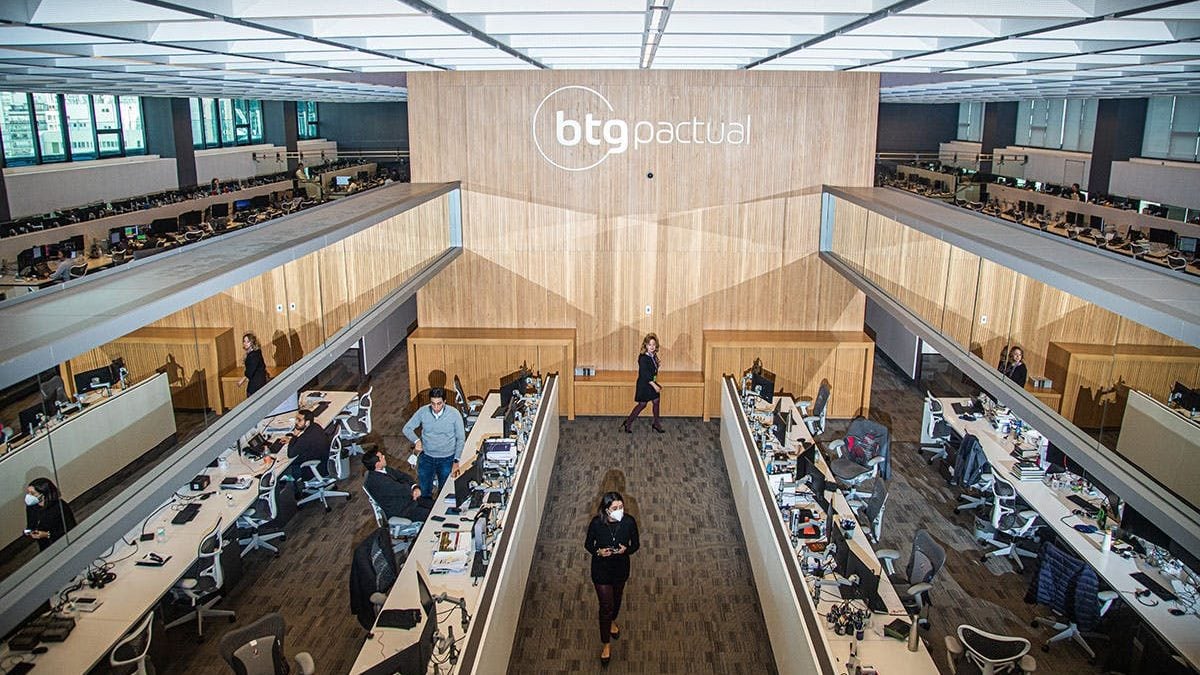Trump Dismisses Fed Governor Lisa Cook With “Immediate Effect”
| By Amaya Uriarte | 0 Comentarios

U.S. President Donald Trump announced the dismissal of Federal Reserve Governor Lisa Cook over alleged irregularities in obtaining mortgage loans. This unprecedented decision could test the limits of presidential power over the independent monetary policy body if challenged in court, according to Reuters.
Trump stated in a letter addressed to Cook—the first African American woman to serve on the Fed’s governing board—that he had “sufficient grounds to remove her from office” due to Cook’s declaration in 2021, in documents related to separate mortgage loans on properties in Michigan and Georgia, that both properties were primary residences in which she intended to live.
The U.S. president accused Cook in the letter of having engaged in “deceptive and criminal conduct in a financial matter” and said he no longer trusted her “integrity.”
“At a minimum, the conduct in question demonstrates the kind of negligence in financial transactions that calls into question her competence and reliability as a financial regulator,” he said, asserting his authority to dismiss Cook under Article 2 of the U.S. Constitution and the Federal Reserve Act of 1913.
Cook’s Response
Cook responded in a statement emailed to journalists via attorney Abbe Lowell’s law firm, saying that Trump “has no legal grounds or authority” to remove her from the post to which she was appointed by former president Joe Biden in 2022. “I will continue performing my duties to support the U.S. economy,” the statement from Cook read.
Lowell, for his part, stated that Trump’s “demands lack any proper process, basis, or legal authority. We will take all necessary steps to prevent this attempted legal action.”
Questions about Cook’s mortgages were first raised last week by the director of the U.S. Federal Housing Finance Agency, William Pulte, who referred the matter to Attorney General Pamela Bondi for investigation.
Although Fed governors’ terms are structured to outlast any given president’s term—and Cook’s runs until 2038—the Federal Reserve Act allows for the removal of a sitting governor “for cause.”
This provision has never been tested by presidents who, particularly since the 1970s, have largely taken a hands-off approach to the Fed in order to preserve confidence in U.S. monetary policy.
Legal scholars and historians say the web of issues that could arise in a court challenge would include questions related to executive power, the Fed’s unique and quasi-private nature and history, and whether Cook’s actions constituted grounds for removal.
Trump’s Pressure
Trump has repeatedly criticized Powell for not lowering interest rates, although he has stopped short of threatening to fire him from a post that, in any case, ends in just under nine months.
Last week, his attention turned to Cook, whose removal would allow Trump to select his fourth nominee to the Fed’s seven-member board, including Governor Christopher Waller, Vice Chair for Supervision appointed during his first term, and the pending nomination of Council of Economic Advisers chair Stephen Miran to a currently vacant seat.
Cook took out the mortgages in question in 2021, when she was an academic. A 2024 official financial disclosure form lists three mortgages in Cook’s name, two of them for personal residences. Loans for primary residences may carry lower interest rates than mortgages for investment properties, which banks consider riskier.
Reaction
U.S. President Donald Trump announced the dismissal of Federal Reserve Governor Lisa Cook over alleged irregularities in obtaining mortgage loans. This unprecedented decision could test the limits of presidential power over the independent monetary policy body if challenged in court, according to Reuters.
Trump stated in a letter addressed to Cook—the first African American woman to serve on the Fed’s governing board—that he had “sufficient grounds to remove her from office” due to Cook’s declaration in 2021, in documents related to separate mortgage loans on properties in Michigan and Georgia, that both properties were primary residences in which she intended to live.
The U.S. president accused Cook in the letter of having engaged in “deceptive and criminal conduct in a financial matter” and said he no longer trusted her “integrity.”
“At a minimum, the conduct in question demonstrates the kind of negligence in financial transactions that calls into question her competence and reliability as a financial regulator,” he said, asserting his authority to dismiss Cook under Article 2 of the U.S. Constitution and the Federal Reserve Act of 1913.
Cook’s Response
Cook responded in a statement emailed to journalists via attorney Abbe Lowell’s law firm, saying that Trump “has no legal grounds or authority” to remove her from the post to which she was appointed by former president Joe Biden in 2022. “I will continue performing my duties to support the U.S. economy,” the statement from Cook read.
Lowell, for his part, stated that Trump’s “demands lack any proper process, basis, or legal authority. We will take all necessary steps to prevent this attempted legal action.”
Questions about Cook’s mortgages were first raised last week by the director of the U.S. Federal Housing Finance Agency, William Pulte, who referred the matter to Attorney General Pamela Bondi for investigation.
Although Fed governors’ terms are structured to outlast any given president’s term—and Cook’s runs until 2038—the Federal Reserve Act allows for the removal of a sitting governor “for cause.”
This provision has never been tested by presidents who, particularly since the 1970s, have largely taken a hands-off approach to the Fed in order to preserve confidence in U.S. monetary policy.
Legal scholars and historians say the web of issues that could arise in a court challenge would include questions related to executive power, the Fed’s unique and quasi-private nature and history, and whether Cook’s actions constituted grounds for removal.
Trump’s Pressure
Trump has repeatedly criticized Powell for not lowering interest rates, although he has stopped short of threatening to fire him from a post that, in any case, ends in just under nine months.
Last week, his attention turned to Cook, whose removal would allow Trump to select his fourth nominee to the Fed’s seven-member board, including Governor Christopher Waller, Vice Chair for Supervision appointed during his first term, and the pending nomination of Council of Economic Advisers chair Stephen Miran to a currently vacant seat.
Cook took out the mortgages in question in 2021, when she was an academic. A 2024 official financial disclosure form lists three mortgages in Cook’s name, two of them for personal residences. Loans for primary residences may carry lower interest rates than mortgages for investment properties, which banks consider riskier.
Reactions
It remains unclear how events will unfold from here, as Trump has stated the dismissal is effective immediately and the Federal Reserve’s next meeting is scheduled for September 16–17.
President Trump’s decision caused a movement in the U.S. fixed income yield curve, as yields on two-year bonds—sensitive to short-term monetary policy expectations—fell sharply, while yields on ten-year bonds—sensitive to inflation risks—rose significantly.
The market reaction reflects expectations that the Fed could lower interest rates, but at the cost of its commitment to control inflation.
Some firms have already weighed in on Trump’s decision to fire Cook. For example, economist and Fortuna SFP founder José Manuel Marín Cebrián commented that Trump is establishing “true state capitalism” in the U.S., “with a focus against the central bank.” He stated that “Powell’s days are numbered,” adding that Trump has refrained from dismissing him before his term ends but is “actively preparing his replacement” and even “plans to announce the next Fed chair before Powell’s term ends in May to gain time.”
It remains unclear how events will unfold from here, as Trump has stated the dismissal is effective immediately and the Federal Reserve’s next meeting is scheduled for September 16–17.









